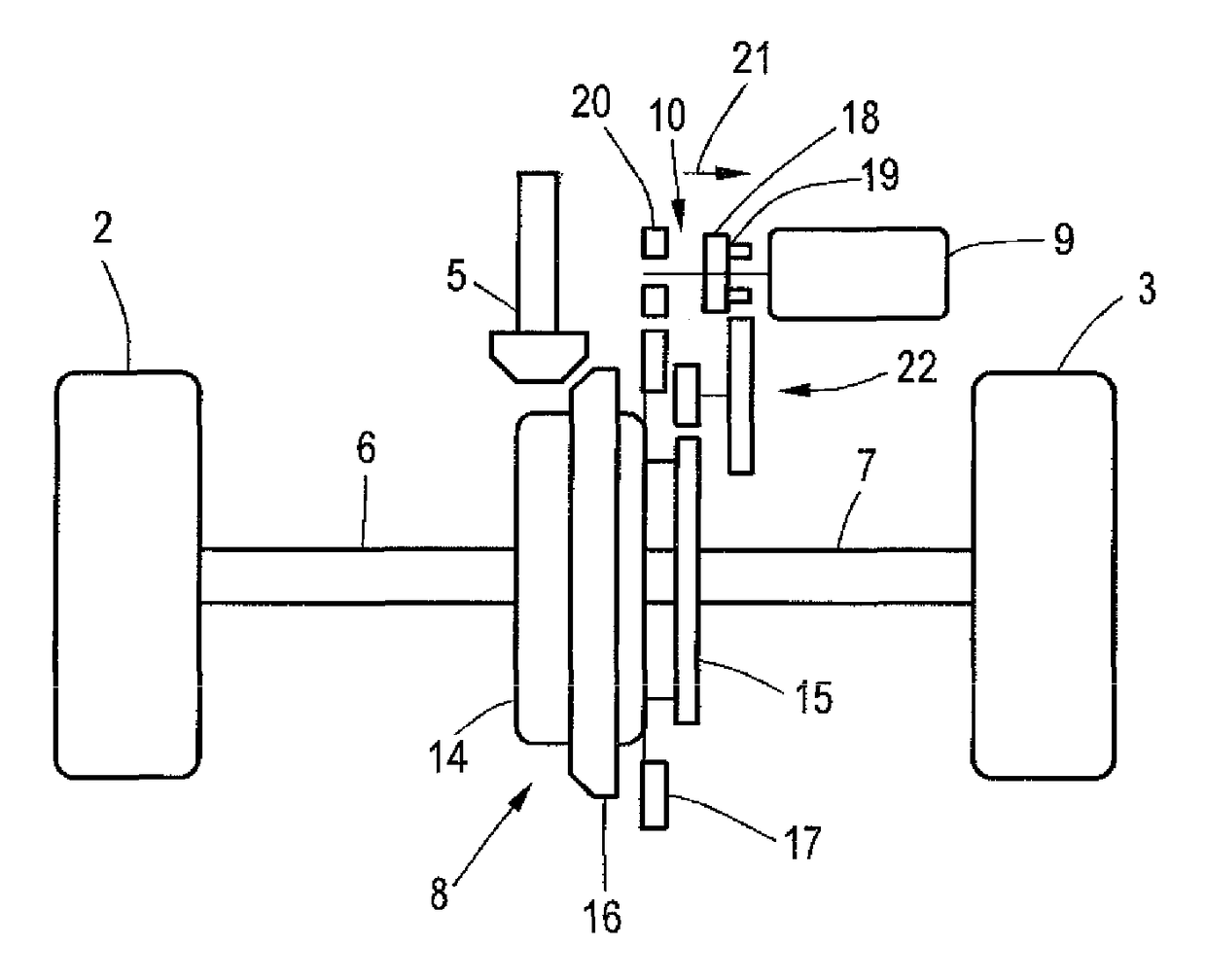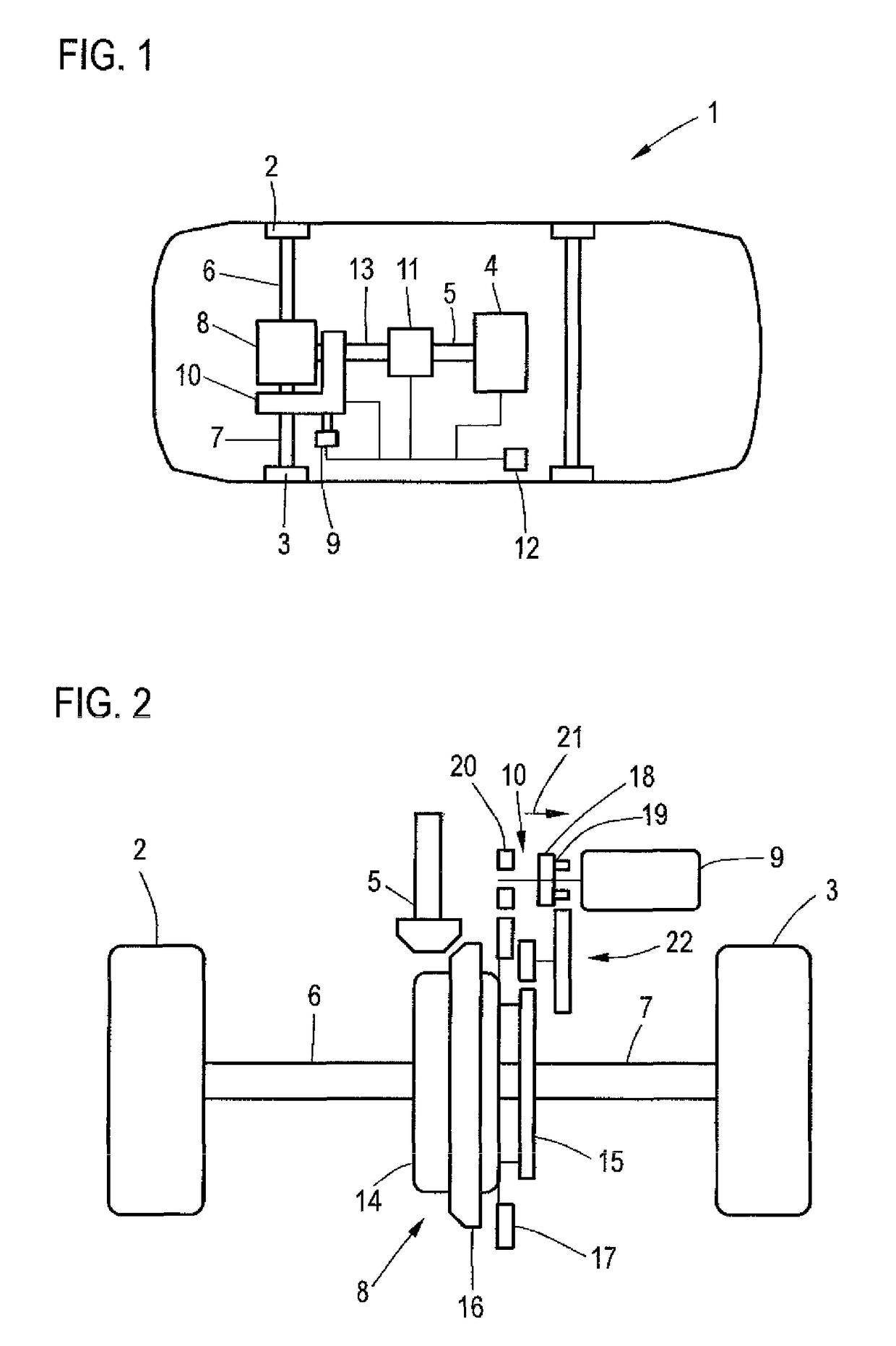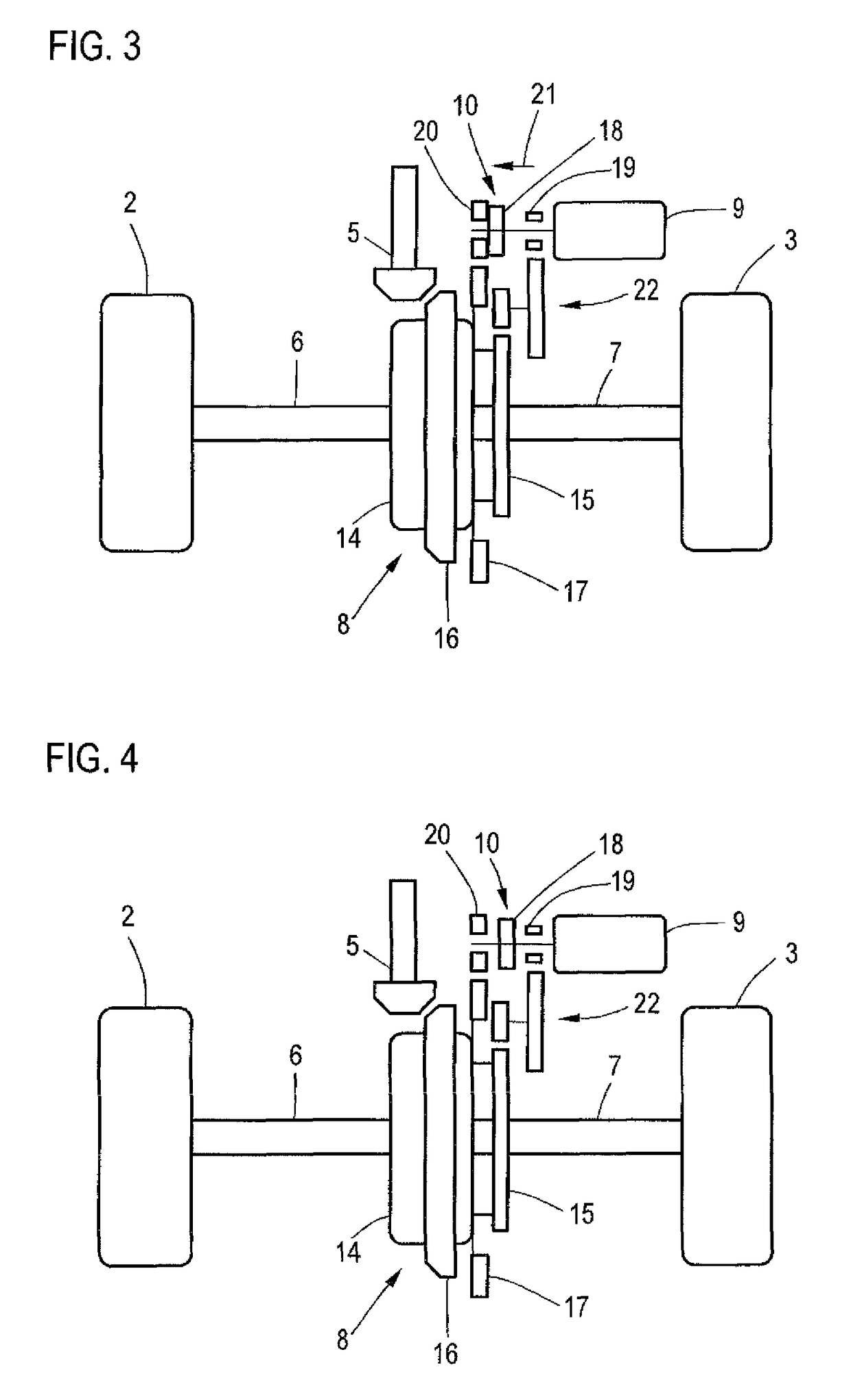Motor vehicle
a motor vehicle and electric motor technology, applied in the field of motor vehicles, can solve the problems of increasing the weight and cost of the motor vehicle, the need for relativly complex mechanics, and the additional components of the electric motor, so as to achieve constant charging and discharging of energy storage devices, and implement protective functions.
- Summary
- Abstract
- Description
- Claims
- Application Information
AI Technical Summary
Benefits of technology
Problems solved by technology
Method used
Image
Examples
Embodiment Construction
[0036]Throughout all the Figures, same or corresponding elements are generally indicated by same reference numerals. These depicted embodiments are to be understood as illustrative of the invention and not as limiting in any way. It should also be understood that the drawings are not necessarily to scale and that the embodiments are sometimes illustrated by graphic symbols, phantom lines, diagrammatic representations and fragmentary views. In certain instances, details which are not necessary for an understanding of the present invention or which render other details difficult to perceive may have been omitted.
[0037]Turning now to the drawing, and in particular to FIG. 1, there is shown a motor vehicle 1 with a left and a right rear wheel 2, 3, which are driven during normal driving operation by the drive motor 4, which is an internal combustion engine. The drive torque provided by the drive motor 4 via the drive shaft 5 is distributed between the rear wheels 2, 3 or between the out...
PUM
 Login to View More
Login to View More Abstract
Description
Claims
Application Information
 Login to View More
Login to View More - R&D
- Intellectual Property
- Life Sciences
- Materials
- Tech Scout
- Unparalleled Data Quality
- Higher Quality Content
- 60% Fewer Hallucinations
Browse by: Latest US Patents, China's latest patents, Technical Efficacy Thesaurus, Application Domain, Technology Topic, Popular Technical Reports.
© 2025 PatSnap. All rights reserved.Legal|Privacy policy|Modern Slavery Act Transparency Statement|Sitemap|About US| Contact US: help@patsnap.com



